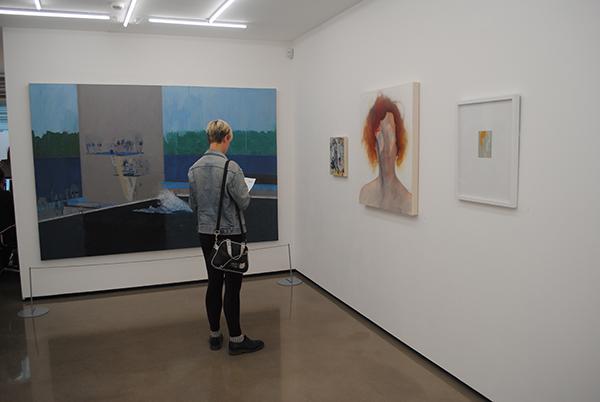Beers London presents The Fantasy of Representation, an exhibition exploring figurative representation in painting featuring the artist’s Hurvin Anderson, Francis Bacon, Gary Hume, Alexander Tinei, Dale Adcock, Scott Anderson, Sverre Bjertnaes, Alison Blickle, Daniel Crews-Chubb, Blake Daniels, Eckart Hahn, Aaron Holz, Adam Lee, Jenny Morgan, Justin Ogilvie, Lou Ros, Andrew Salgado, and Dominic Shepherd.
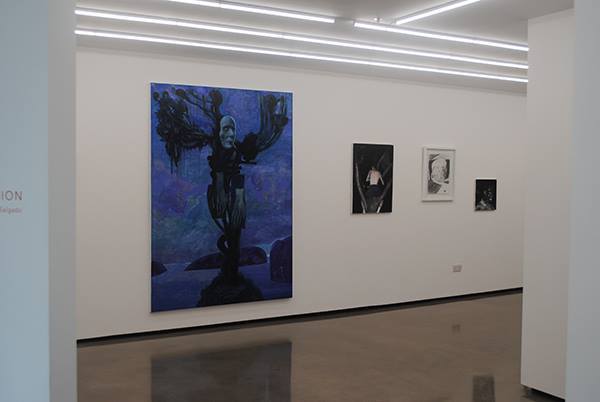 Sverre Bjertnes, The Black Mask (2015), Mixed media on canvas – Daniel Crews-Chubb, Looking into the Sun (King’s Blue) (2015) Oil, spray paint, and pastel on canvas, photo P A Black © Artlyst 2015
Sverre Bjertnes, The Black Mask (2015), Mixed media on canvas – Daniel Crews-Chubb, Looking into the Sun (King’s Blue) (2015) Oil, spray paint, and pastel on canvas, photo P A Black © Artlyst 2015
Accompanying the exhibition are two essays, one by the esteemed art critic Edward Lucie-Smith, and an essay by the curator of the show, artist Andrew Salgado. Lucie-Smith’s ‘The Way I See It Is Not The Way You See It’ explores the paradox of appropriated images; a topic – in light of Richard Prince’s ongoing appropriation practice even involving Instagram – that is at its most relevant. It is therefore an interesting reminder that this particular practice is as old as art itself.
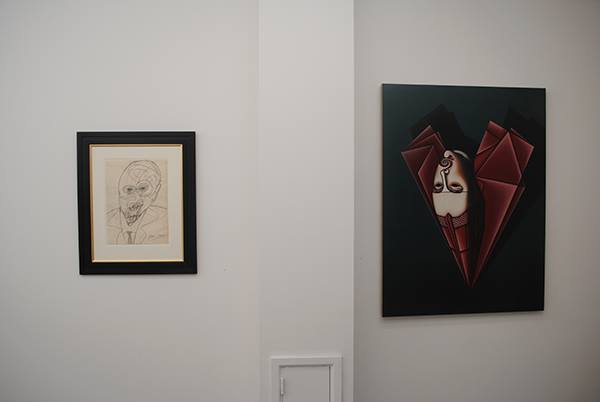 Francis Bacon, ‘Head Drawing’, pencil on paper, 1989 – Dale Adcock, Lady (2015),Oil on linen, photo P A Black © Artlyst 2015
Francis Bacon, ‘Head Drawing’, pencil on paper, 1989 – Dale Adcock, Lady (2015),Oil on linen, photo P A Black © Artlyst 2015
‘In the last few years, a lot of artists – and with them the curators who are their eager supporters – have been advancing a new theory of figurative art. This, like so many things in the contemporary art scene, bases itself on a paradox. The paradox is that appropriated images are in fact the most original things a would-be avant-gardist can present to his or her audience’ – Edward Lucie-Smith – ‘The Way I See It Is Not The Way You See It’.
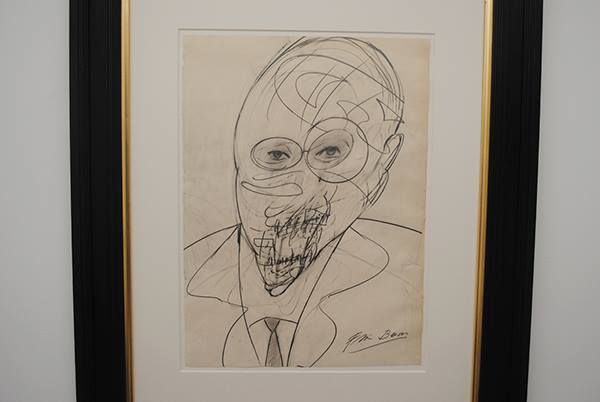 Francis Bacon ‘Head Drawing’, 1989, pencil on paper, photo P A Black © Artlyst 2015
Francis Bacon ‘Head Drawing’, 1989, pencil on paper, photo P A Black © Artlyst 2015
‘It may seem paradoxical, perhaps, that an exhibition based on the wonderment of representational painting should lead with a quote by Josef Albers – one of the most regarded and unforgiving modernists of the 20th century. However Albers, as educator, theorist, stylist, and technician, has had some of the most profound effects on the world of contemporary painting, as any other leading artist. In some instances, his breakthroughs in colour-theory, and his insistence on the importance of the eye and the subsequent cognitive processes (as it relates to our understanding of art), can be read across discipline, media, or intent.
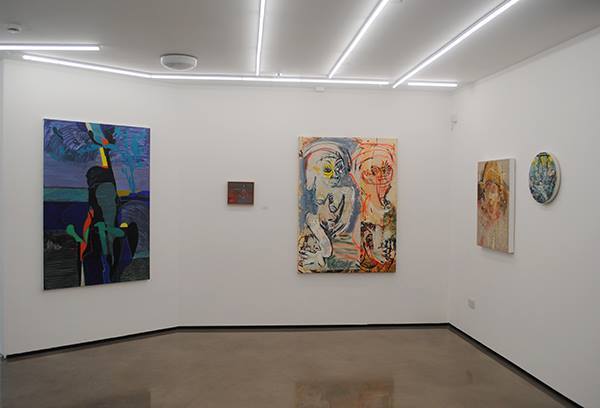 Sverre Bjertnes, The New State (2015), Mixed media on canvas, 210x160cm, photo P A Black © Artlyst 2015
Sverre Bjertnes, The New State (2015), Mixed media on canvas, 210x160cm, photo P A Black © Artlyst 2015
These are not ideas beholden to abstraction, but ideas of abstraction that have bled into the other disciplines. They prove, above all, that fantasy lurks in even the most austere corners of representation. In some respects, as an artist myself, I often find myself returning to simpler ideas to find deeper complexities in my understanding (and execution) of art: ideas such as those laid out by Albers, to understand the challenges of a work, by, for instance, Francis Bacon, who is largely regarded as the greatest painter of the second half of the 20th century. The stark, uncharacteristic and often uncompromising combinations, favoured by Albers, can assist in our understanding of the unlikely combinations in some latter-career Bacons: where those unearthly pinks, lustrous ochres, blood-deep maroons, and army-greens truly come alive ‘ – Essay by Andrew Salgado.
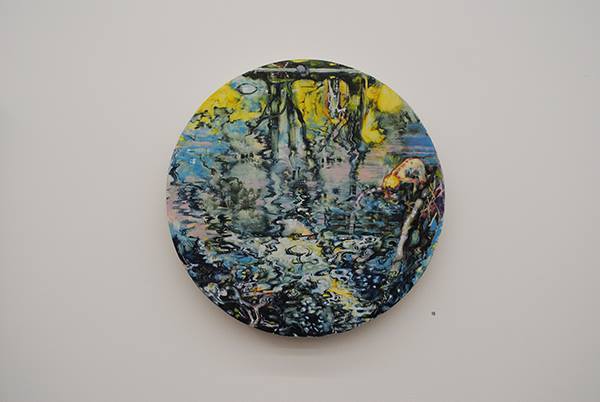 Dominic Shepherd, The River (2013),Oil on canvas, photo P A Black © Artlyst 2015
Dominic Shepherd, The River (2013),Oil on canvas, photo P A Black © Artlyst 2015
Dale Adcock – Hurvin Anderson – Scott Anderson – Francis Bacon – Sverre Bjertnaes – Alison Blickle – Daniel Crews-Chubb – Blake Daniels – Eckart Hahn – Aaron Holz – Gary Hume – Adam Lee – Jenny Morgan – Justin Ogilvie – Lou Ros – Andrew Salgado – Dominic Shepherd – Alexander Tinei. Curated by artist Andrew Salgado.
The Fantasy of Representation – Beers London – until 19 September 2015

